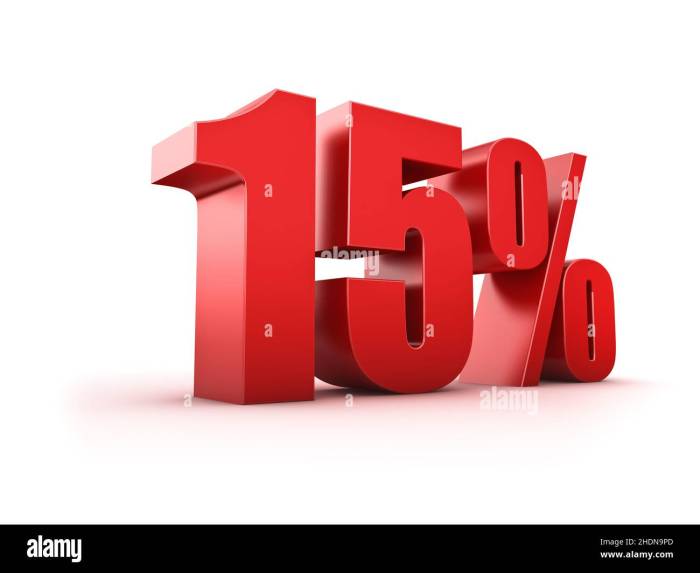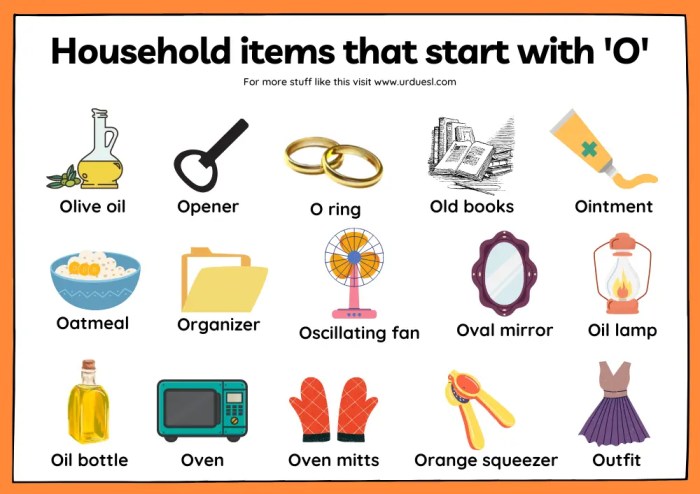
15 essential differences between productive people and busy people? This exploration delves into the subtle but significant distinctions between individuals who consistently achieve results and those who simply feel overwhelmed. We’ll uncover the core differences in time management, goal-setting, learning, and self-care, offering valuable insights into unlocking your own potential for productivity.
From defining productivity itself to understanding the importance of self-care, this comprehensive guide will unpack the 15 key areas where productive people excel. We’ll explore how they approach time management, prioritize tasks, and cultivate a growth mindset. Prepare to discover actionable strategies you can immediately apply to boost your own productivity.
Defining Productivity vs. Busyness

Productivity and busyness are often confused, leading to a misinterpretation of personal achievement. While both involve activity, their core differences lie in the outcomes they produce. Understanding this distinction is crucial for achieving meaningful goals and maintaining well-being. A productive individual focuses on impactful results, while a busy individual might be engrossed in numerous tasks without substantial progress.The key difference between productivity and busyness is the quality of output over the quantity of activity.
Productivity is characterized by achieving meaningful results that contribute to personal goals and well-being. Busyness, conversely, involves engaging in many activities without necessarily achieving substantial results. This difference is not about the
- amount* of work, but the
- impact* of that work. Productivity leads to positive change; busyness might just create a sense of being overwhelmed.
Productivity Defined
Productivity is the ability to produce desired results efficiently and effectively. It encompasses not just completing tasks, but also completing them in a way that aligns with one’s values and goals, and that maximizes the return on time invested. A productive person is focused on achieving significant results in a way that is sustainable and promotes well-being. They prioritize tasks based on their importance and impact, and they seek ways to streamline processes to optimize their efforts.
Busyness Defined
Busyness is characterized by a high volume of activity, often without a clear focus on achieving specific results. Busy individuals often feel overwhelmed and stressed, despite their constant engagement. Their actions might not always align with their goals or values. They often feel reactive, responding to demands rather than proactively pursuing objectives.
Relationship Between Productivity and Well-being
Productivity is intrinsically linked to well-being. When individuals feel productive, they often experience a sense of accomplishment and control over their lives. This sense of accomplishment fosters self-esteem and confidence. Conversely, chronic busyness often leads to stress, anxiety, and burnout, negatively impacting overall well-being. A productive approach promotes a healthier work-life balance, allowing for relaxation and rejuvenation.
Comparing Productive and Busy Individuals
| Characteristic | Productive Person | Busy Person |
|---|---|---|
| Focus | Achieving significant results; maximizing impact; strategic planning | Engaging in numerous tasks; reacting to demands; lack of prioritization |
| Goal Setting | Clear, measurable goals; aligned with values | Vague or absent goals; often reactive |
| Time Management | Prioritization; efficient task scheduling; time blocking | Poor time management; often procrastinating; feeling overwhelmed |
| Outcome | Significant progress towards goals; feeling accomplished; increased self-efficacy | Feeling overwhelmed; little progress towards goals; potential for burnout |
| Well-being | High levels of well-being; balanced life; sense of control | Potential for stress, anxiety, and burnout; imbalanced life; sense of being overwhelmed |
Time Management Strategies
Time management is a critical skill that separates productive individuals from those who are merely busy. Productive people understand that managing time effectively is not about cramming more tasks into a day, but about focusing on high-impact activities and optimizing their workflow. They prioritize tasks, plan their time strategically, and utilize techniques to minimize wasted effort. Conversely, busy people often get caught in a whirlwind of tasks, failing to distinguish between urgent and important activities, leading to feelings of overwhelm and reduced output.Effective time management is not about squeezing every minute, but about optimizing the use of time for maximum impact.
This involves understanding the nuances of how productive people allocate their time, and contrasting that with the patterns of busy individuals. Prioritizing tasks and setting realistic goals are fundamental aspects of this difference, as is the crucial distinction between planning work and merely scheduling tasks.
Effective Time Management Strategies of Productive People
Productive individuals employ various strategies to maximize their output and minimize wasted time. These strategies often include meticulous planning, prioritization, and the use of time-tracking tools to identify time-wasting patterns. They recognize the importance of not just scheduling tasks, but also considering the context of those tasks and how they fit into their overall goals.
- Prioritization Techniques: Productive individuals utilize methods like the Eisenhower Matrix (urgent/important), Pareto Principle (80/20 rule), or MoSCoW method (Must have, Should have, Could have, Won’t have) to prioritize tasks based on their importance and urgency. This allows them to focus on the most critical tasks first, ensuring progress on high-impact activities.
- Time Blocking: They schedule specific blocks of time for particular tasks, preventing task-switching and allowing for deep focus. This dedicated time allocation significantly increases efficiency and reduces context-switching overhead. For instance, a productive individual might dedicate two hours to writing, followed by an hour to responding to emails, ensuring focused work within each block.
- Delegation and Outsourcing: Recognizing the limitations of their time, productive individuals don’t hesitate to delegate tasks that can be completed by others or outsourced. This frees up their time for more critical and strategic work, ensuring efficient use of resources.
Allocating Time: Productive vs. Busy
Productive people strategically allocate their time, focusing on activities that align with their goals. They prioritize tasks that contribute significantly to their objectives, understanding the importance of impact over volume. Busy individuals, on the other hand, often get caught up in reactive tasks, responding to urgent demands without a clear strategic framework.
- Strategic Allocation: Productive people allocate their time based on the impact each task has on their overall goals. They understand the long-term implications of their decisions, ensuring alignment between daily tasks and larger objectives. Busy people, however, often respond to immediate demands, leading to a lack of strategic direction and reduced long-term impact.
- Reactive vs. Proactive Approach: Productive individuals adopt a proactive approach, anticipating potential problems and proactively planning solutions. They use their time to prevent issues rather than reacting to them, which leads to a more sustainable and controlled workflow. Conversely, busy individuals often operate reactively, responding to urgent demands without a clear plan.
Importance of Prioritization and Realistic Goals
Prioritizing tasks and setting realistic goals is crucial for productivity. It allows individuals to focus on high-impact activities and avoid getting bogged down in less important tasks. Unrealistic goals, on the other hand, can lead to feelings of inadequacy and reduced motivation.
- Impact over Volume: Productive people prioritize tasks based on their impact on achieving their goals. They focus on activities that have the highest potential for achieving their objectives, understanding that quantity does not always equate to quality or impact.
- Realistic Goals: Setting realistic goals is essential for maintaining motivation and avoiding feelings of overwhelm. Productive individuals understand that progress, even small, is valuable and build on achievable milestones to maintain a positive momentum.
Planning and Scheduling
Planning is a crucial element of time management for productive individuals. They carefully plan their work, considering the interdependencies between tasks and their overall goals. Busy individuals, however, often rely on scheduling tasks without considering the strategic implications.
- Detailed Planning: Productive people plan their work in detail, considering the time required for each task, dependencies between tasks, and potential roadblocks. This detailed planning allows for flexibility and adjustments as needed.
- Strategic Scheduling: Productive individuals schedule their tasks in a way that supports their overall goals. They consider the sequence of tasks and how they contribute to larger projects, ensuring a smooth and efficient workflow.
Common Time Management Strategies and Effectiveness
| Strategy | Description | Effectiveness for Productivity |
|---|---|---|
| Time Blocking | Allocating specific time slots for specific tasks. | High. Promotes focus and reduces task-switching. |
| Prioritization Matrix | Categorizing tasks by urgency and importance. | High. Helps focus on high-impact tasks. |
| Pomodoro Technique | Working in focused intervals with short breaks. | Moderate to High. Enhances concentration but requires discipline. |
| Two-Minute Rule | Completing tasks that take less than two minutes immediately. | High. Reduces the backlog of small tasks. |
Goal Setting and Focus
Productivity isn’t simply about working harder; it’s about workingsmarter*. A crucial aspect of this smarter approach is the way goals are set and pursued. Productive individuals understand that clear, well-defined goals are the bedrock of focused action, while busy individuals often get bogged down in a whirlwind of tasks without a clear direction. This difference in approach significantly impacts the outcome and overall sense of accomplishment.Productive individuals understand that vague goals lead to scattered efforts.
They meticulously craft specific, measurable, achievable, relevant, and time-bound (SMART) goals. This precision allows them to allocate resources effectively and track progress accurately. Busy individuals, on the other hand, may have general aspirations but lack the concrete steps needed to achieve them. This often results in a feeling of being overwhelmed and unfulfilled.
Clear and Specific Goals
Productive individuals recognize the power of detailed goal-setting. They don’t just aim to “be healthier”; they set a goal to “exercise three times a week for 30 minutes, focusing on cardio and strength training.” This specificity creates a clear path and allows for focused effort. Conversely, busy individuals might aim for “better health” without outlining the concrete actions required.
This lack of specificity makes it challenging to track progress and maintain motivation.
High-Impact Activities
Productive people prioritize high-impact activities. They identify the tasks that will yield the greatest return and focus their energy on those areas. This strategic approach contrasts with the busy individual who may tackle numerous tasks, often without a clear understanding of which ones will have the most significant impact.
Minimizing Distractions and Maintaining Focus
Productive individuals actively manage distractions. They understand that interruptions erode focus and hinder progress. They create dedicated workspaces, schedule focused work periods, and use tools to block out distractions. Busy individuals, however, often struggle to prioritize focus and may find themselves easily sidetracked by emails, social media, or other interruptions.
Characteristics of a Productive Individual’s Approach to Goal Setting
Productive individuals are proactive, not reactive. They anticipate potential roadblocks and develop contingency plans. They also regularly review and adjust their goals as needed. They view goals as dynamic, not static, recognizing that circumstances and priorities can change. Busy individuals, conversely, may react to challenges as they arise without a preemptive strategy.
Comparison Table
| Characteristic | Productive Individual | Busy Individual |
|---|---|---|
| Goal Definition | Specific, measurable, achievable, relevant, time-bound (SMART) | Vague, general aspirations |
| Prioritization | Focus on high-impact activities | Tackle multiple tasks without clear prioritization |
| Distraction Management | Proactive strategies to minimize distractions | Easily sidetracked by interruptions |
| Goal Adjustment | Regular review and adjustment of goals | Reactive to challenges without preemptive strategies |
Learning and Growth Mindset
Productive individuals don’t just achieve goals; they cultivate a deep-seated commitment to continuous improvement. This commitment fuels their ability to adapt to changing circumstances, learn from setbacks, and leverage feedback for enhanced performance. This mindset differentiates them from those who simply get busy, often without a clear path toward progress or understanding. The focus shifts from merely completing tasks to proactively seeking growth and development.Productive individuals see challenges not as obstacles, but as opportunities for learning and skill refinement.
They embrace the unknown and view setbacks as crucial stepping stones on their journey. This proactive approach to learning distinguishes them from those who may become discouraged or stuck in routines. Their adaptability and willingness to evolve set the stage for long-term success.
How Productive People Continuously Learn and Adapt
Productive people actively seek out new knowledge and skills, recognizing that continuous learning is essential for staying ahead in today’s dynamic world. They’re not afraid to step outside their comfort zones and try new things. This proactive approach distinguishes them from those who tend to stay within familiar territories, often missing out on opportunities for growth.
How Productive People Embrace Challenges and View Setbacks as Learning Opportunities
Productive individuals view challenges as opportunities for development. They see setbacks not as failures, but as valuable lessons that inform future actions. This resilient mindset allows them to learn from mistakes and refine their strategies. A common thread is the proactive search for solutions and the acceptance of learning from any outcome, positive or negative.
Comparison of Learning Styles
Productive individuals often exhibit a more proactive and self-directed learning style. They actively seek out resources, experiment with new approaches, and analyze their experiences to identify areas for improvement. Busy individuals, on the other hand, might be more reactive to external demands and less inclined to proactively pursue new knowledge or skills. This reactive learning style often results in less thorough assimilation and retention.
Seeking Feedback and Learning from Mistakes
Productive people actively seek feedback from mentors, colleagues, and superiors. They understand that feedback is a crucial tool for self-improvement. They use this feedback to identify areas where they can improve their skills and strategies. They view mistakes as opportunities to learn and adjust their approaches. This willingness to embrace feedback and criticism, even when it’s uncomfortable, sets them apart.
Ever wondered what separates a productive person from someone just busy? I’ve been diving deep into the 15 essential differences, and it’s fascinating. Understanding those differences is key to unlocking your own potential, but it’s also crucial to look at the broader picture of success. Exploring the “fifty habits of highly successful people” fifty habits of highly successful people reveals a lot about what it takes to be truly effective.
Ultimately, the 15 essential differences between productive and busy people boil down to focusing on outcomes and strategic action over just endless tasks.
Importance of Continuous Learning and Skill Development
Continuous learning and skill development are fundamental to the success of productive individuals. They recognize that the world is constantly changing, and that staying stagnant means falling behind. This commitment to self-improvement is a core element of their productivity. This includes acquiring new skills, refining existing ones, and staying up-to-date with industry trends.
Learning Approaches: Productive vs. Busy
| Characteristic | Productive People | Busy People |
|---|---|---|
| Learning Approach | Proactive, self-directed, seeking out resources, experimenting with new approaches, analyzing experiences | Reactive, responding to external demands, limited proactive pursuit of knowledge and skills |
| Feedback | Actively seeks and utilizes feedback from various sources | May avoid or resist feedback, or focus on the task instead of learning |
| Challenges | Embrace challenges as opportunities for learning and development | May perceive challenges as obstacles and avoid them |
| Mistakes | View mistakes as valuable learning experiences | May view mistakes as failures and avoid repeating them without deeper learning |
Delegation and Collaboration
Effective productivity isn’t solely about individual effort; it’s also about strategically leveraging the skills and time of others. Delegation and collaboration are crucial components of a productive workflow, allowing individuals to focus on high-impact tasks while freeing up time for strategic thinking and problem-solving. Productive people understand the art of delegation, recognizing when to ask for help and how to do it effectively.Delegation is not a sign of weakness; it’s a testament to understanding your strengths and limitations.
It allows for better time management, improved efficiency, and the opportunity to develop the skills of others within your team or organization. Knowing when to delegate is a critical skill that separates productive people from those who are simply busy. Collaboration, in tandem with delegation, fosters innovation and allows teams to tackle complex projects with greater efficiency and a broader range of perspectives.
Importance of Delegation in Increasing Productivity
Delegation is a powerful tool for increasing productivity. By entrusting tasks to others, individuals can focus their time and energy on higher-priority activities. This allows for a more streamlined workflow and increased output. Productive people recognize that their time is best spent on tasks that leverage their unique skills and expertise, and they understand that delegating tasks that others can perform effectively allows for a more balanced and efficient workload.
Effective Delegation Strategies
Productive people effectively delegate tasks by clearly defining the scope of the work, outlining expectations and deadlines, and providing necessary resources and support. They ensure clear communication, actively listen to the delegatee, and empower them to make decisions within the given parameters. This includes providing feedback and recognition for the completed work. Furthermore, they establish a system for monitoring progress and addressing any challenges that may arise.
Comparison of Productive and Busy People in Handling Collaboration and Teamwork
Busy people often struggle with collaboration, viewing teamwork as an obstacle to individual progress. In contrast, productive people recognize the synergistic potential of teamwork. They foster a collaborative environment by actively seeking input from others, valuing diverse perspectives, and actively supporting team members. This difference is particularly evident in how they manage conflicts and disagreements. Productive people use collaborative approaches to find mutually beneficial solutions, while busy people often become entrenched in their individual viewpoints.
Examples of When Delegation Is Not Appropriate
Delegation is not always the best approach. Certain tasks, such as those requiring a high degree of personal judgment, expertise, or confidentiality, may not be suitable for delegation. Similarly, tasks that require immediate action or direct interaction with clients or stakeholders may be best handled by the individual.
Importance of Knowing When to Ask for Help
Recognizing when to ask for help is a critical component of productivity. Productive people understand that seeking assistance is a sign of strength, not weakness. They recognize that leveraging the expertise of others can expedite tasks, improve quality, and ultimately contribute to achieving desired outcomes. This also fosters a culture of support and collaboration within the team.
Situations Where Delegation is Beneficial and Detrimental
| Situation | Beneficial | Detrimental |
|---|---|---|
| Routine tasks | Yes – Freeing up time for strategic work | No – Might not add value or skill development |
| Complex projects | Yes – Leveraging diverse skill sets | No – May require careful supervision to avoid errors |
| Time-sensitive tasks | No – Might not meet deadlines | Yes – Ensuring task completion without delay |
| Tasks requiring specialized knowledge | Yes – Utilizing expertise | No – Risk of incomplete or incorrect work |
Self-Care and Well-being: 15 Essential Differences Between Productive People And Busy People

Productivity isn’t just about squeezing more tasks into a day; it’s about optimizing performance and sustaining it over time. A crucial component of this sustained high-performance is prioritizing self-care. Understanding the relationship between self-care and productivity is key to unlocking your full potential.Self-care isn’t a luxury, but a necessity for optimal performance. It’s the foundation upon which productivity is built.
Productive individuals recognize this and integrate self-care into their daily routines, viewing it as an investment, not a distraction. Busy individuals, however, often neglect self-care, leading to burnout and decreased productivity in the long run. This section explores the importance of self-care in maintaining sustained productivity.
The Relationship Between Self-Care and Productivity
Self-care encompasses a wide range of activities aimed at nurturing physical, mental, and emotional well-being. It’s about recognizing and meeting your individual needs, thereby creating an environment conducive to focused work and sustained output. A well-rested, nourished, and emotionally balanced individual is far more likely to be productive than someone constantly operating on fumes.
How Productive People Prioritize Self-Care
Productive individuals view self-care as an integral part of their daily routines, not an afterthought. They schedule time for activities that replenish their energy and mental clarity. This might include exercise, meditation, spending time in nature, or simply engaging in activities they enjoy. This proactive approach to self-care ensures they maintain energy and focus throughout the day.
They don’t wait until they feel depleted before taking care of themselves; instead, they prioritize it proactively.
How Busy Individuals Neglect Self-Care
Busy individuals often prioritize external tasks over their internal needs. They might sacrifice sleep, healthy eating, and relaxation to meet deadlines or handle pressing responsibilities. This constant state of pressure can lead to burnout, decreased focus, and reduced productivity. In the short term, they might seem productive, but the long-term impact of neglecting self-care is often a vicious cycle of decreased efficiency and increased stress.
Examples of Self-Care Practices
Effective self-care practices vary greatly depending on individual preferences. Examples include:
- Regular exercise (e.g., a brisk walk, yoga, or a gym session) to release endorphins and improve mood.
- Adequate sleep (7-9 hours per night) to allow the body and mind to rest and restore.
- Mindfulness practices (e.g., meditation or deep breathing) to manage stress and improve focus.
- Healthy eating habits (nutritious meals and hydration) to provide the body with the fuel it needs to function optimally.
- Engaging in hobbies (e.g., reading, painting, or spending time in nature) to reduce stress and promote relaxation.
Comparing Self-Care Routines of Productive and Busy Individuals
Productive individuals typically integrate self-care into their daily routines, making it a non-negotiable part of their schedule. They view it as an investment in their well-being and productivity. In contrast, busy individuals often view self-care as a luxury they can’t afford, leading to a pattern of neglect and ultimately, reduced productivity. The difference lies in perspective: productive individuals see self-care as a prerequisite for high performance, while busy individuals see it as an optional extra.
Importance of Self-Care in Maintaining Productivity
| Aspect | Importance |
|---|---|
| Physical Health | Ensures energy levels and resilience to handle demanding tasks. |
| Mental Well-being | Maintains focus, clarity, and problem-solving skills. |
| Emotional Regulation | Promotes a balanced and positive mindset, reducing stress and anxiety. |
| Reduced Stress | Avoids burnout and maintains sustained productivity over time. |
| Improved Focus | Enhances concentration and efficiency in completing tasks. |
Decision-Making and Prioritization
Productive individuals don’t just react to tasks; they proactively shape their work environments. A key differentiator lies in their approach to decision-making and prioritization. They understand that effective choices are the bedrock of efficiency and accomplishment. This crucial skill allows them to navigate complexities and focus on what truly matters.Productive people recognize that decisions, big or small, impact their overall progress.
A poorly made decision, even if seemingly insignificant, can derail momentum and create a cascade of further challenges. They cultivate a deliberate process for making informed choices, recognizing that this is a skill that can be learned and improved.
Ever wondered what separates the truly productive from the just plain busy? It’s more than just time management; it’s about mindset. Diving into the 15 essential differences between these two groups reveals a fascinating picture, and understanding the 9 characteristics high performers like to explore ( 9 characteristics high performers ) can illuminate those differences further.
Ultimately, productive people focus on outcomes, not just activities, which is key to understanding those crucial 15 distinctions.
Informed Decision-Making
Productive individuals understand the importance of gathering all relevant information before making a decision. This includes considering potential outcomes, both positive and negative, and evaluating the long-term implications of their choices. They don’t rush into decisions; instead, they take the time to thoroughly assess the situation. A crucial part of informed decision-making is understanding the potential risks and rewards associated with each option.
Prioritization Strategies
Effective prioritization is a cornerstone of productivity. Productive people use various methods to identify tasks that are most crucial and align with their overall goals. They understand that not all tasks are created equal and prioritize accordingly. This often involves using frameworks like the Eisenhower Matrix (urgent/important) or similar tools to categorize tasks and allocate time effectively.
Quick Decision-Making
While thoroughness is vital, productive individuals also recognize the importance of making timely decisions. Procrastination and indecision can lead to missed opportunities and lost momentum. They develop strategies for making quick decisions without sacrificing quality. This often involves identifying key factors and making choices based on the available information. It’s about recognizing that not every decision needs to be agonizingly deliberated.
This ability to make quick, informed decisions allows them to maintain momentum and stay on track.
Ever wondered what separates a productive person from someone just busy? It’s more than just getting things done; it’s about how you do them. While focusing on those 15 essential differences, consider incorporating some healthy habits like eating beans. Trying out some delicious bean recipes, like those in this article on 10 delicious bean recipes help you lose weight , can be a game-changer.
Ultimately, understanding the difference between productivity and busyness is key to achieving your goals and feeling fulfilled, not just busy.
Comparison of Decision-Making Strategies
Busy individuals often make decisions based on immediate pressures or perceived urgency. They might jump to conclusions without fully considering the potential consequences. Productive individuals, on the other hand, are more strategic and analytical in their decision-making. They proactively anticipate potential problems and weigh various options before making a choice. This difference in approach often leads to more efficient outcomes and fewer wasted efforts.
Decision-Making Strategies for Productive People
| Strategy | Description | Example |
|---|---|---|
| Prioritize by Impact | Focus on tasks with the highest potential impact on goals. | Choose a project that aligns directly with long-term career objectives. |
| Use Frameworks | Employ tools like the Eisenhower Matrix or Pareto Principle to categorize and prioritize tasks. | Use the Eisenhower Matrix to separate urgent/important tasks from urgent/not important. |
| Seek Feedback | Incorporate diverse perspectives to ensure well-rounded decision-making. | Discuss project plans with colleagues and mentors for constructive criticism. |
| Establish Clear Criteria | Define specific parameters to guide decision-making. | Set specific criteria for evaluating project proposals, like cost-effectiveness and feasibility. |
| Timeboxing | Allocate specific time slots for decision-making tasks. | Schedule 30 minutes each day to review and prioritize tasks. |
Systems and Processes
Productivity isn’t just about working harder; it’s about working smarter. A key differentiator between productive and busy individuals lies in their ability to establish and consistently apply efficient systems and processes. This structured approach streamlines workflows, minimizes wasted time, and maximizes output. Understanding how productive people design and utilize these systems is crucial for anyone seeking to enhance their efficiency and achieve their goals.Effective systems aren’t just about tools; they’re about integrating strategies and routines into a cohesive framework.
This framework, when consistently followed, fosters a sense of control and predictability, allowing for better time management and improved focus. Productive individuals recognize that their actions are interconnected and strive to optimize these connections to minimize friction and maximize results.
Designing Systems for Optimization, 15 essential differences between productive people and busy people
Productive people meticulously design systems to optimize their workflow. This involves identifying recurring tasks, analyzing bottlenecks, and developing standardized procedures. They understand that consistent application of these systems, over time, leads to significant improvements in efficiency and output. This proactive approach contrasts sharply with the reactive and often haphazard approach taken by busy individuals, who often lack structured systems and consequently experience more time-wasting and reduced output.
Comparison: Productive vs. Busy
Productive individuals view streamlining processes as a continuous improvement opportunity. They proactively seek ways to automate tasks, delegate responsibilities, and eliminate redundant steps. Busy individuals, on the other hand, often lack a clear system for managing their tasks. This leads to a reactive approach, where they address tasks as they arise, often leading to missed deadlines and feelings of overwhelm.
Importance of Consistency
Consistency in applying systems is paramount. The initial design of a system is only the first step. The true value lies in the sustained application and refinement over time. This repetition builds muscle memory and automates the necessary steps, making the individual more efficient and reducing the mental load required to complete tasks. Productive people understand the significance of this consistent practice and adjust their systems as needed to maintain optimal performance.
Examples of Systems Used by Productive People
Productive individuals utilize a range of systems to increase efficiency. These include project management software for tracking tasks and deadlines, automated email responses for handling routine inquiries, and standardized templates for common documents. The specific systems used vary depending on individual needs and preferences, but the common thread is the conscious effort to create and maintain streamlined processes.
For instance, using a daily planner with dedicated slots for specific tasks can help individuals prioritize and allocate time effectively.
Impact of Systems on Productivity
| Aspect | Impact on Productivity |
|---|---|
| Clear Task Definition | Reduced ambiguity, improved focus, and more accurate time estimations. |
| Standardized Procedures | Reduced errors, increased consistency, and smoother workflow. |
| Automated Processes | Reduced manual effort, saving time and increasing accuracy. |
| Regular Review and Adjustment | Continuous improvement, adaptation to changing circumstances, and optimization of workflow. |
| Delegation of Tasks | Increased capacity to handle more complex tasks, improved time management, and improved team performance. |
Final Conclusion
Ultimately, the key takeaway is that productivity isn’t about working harder; it’s about working
-smarter*. By understanding the differences between productive and busy individuals, you can cultivate the habits and mindsets that lead to meaningful achievement. This isn’t just about getting more done; it’s about living a more fulfilling and balanced life. The 15 essential differences highlighted in this article provide a roadmap for achieving your goals while prioritizing your well-being.




